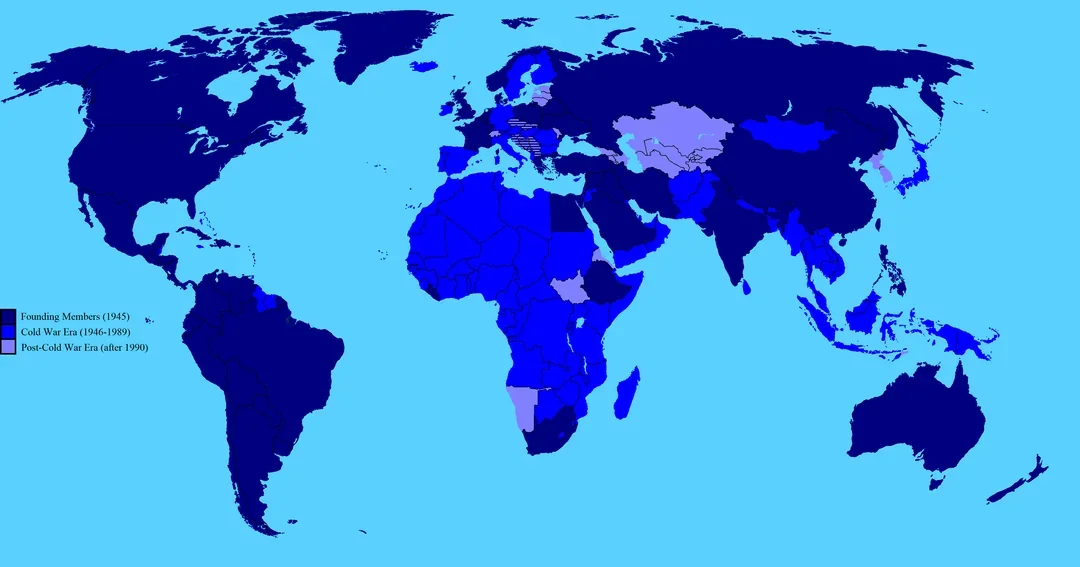cold war history: decolonization and its aftermath
When the world decolonized, a race began for allies. The Soviets were in a better position to win it.
decolonization during the cold war was a major boost to the soviet union
Decolonization favored the Soviet Union during the Cold War in three ways. First, post-colonial non-aligned governments in transition sought development assistance, which created an opportunity for Soviet ideological influence. Second, newly minted Soviet-allied leftist countries filled the UN and gained the power to outvote Western democracies. Finally, the US made policy mistakes by viewing some post-colonial struggles for independence as Cold War battles for influence. This drain on allied resources and portrayal of the US as an aggressor further aided the Soviets.
Four years after World War II, when the US enacted the security recommendations outlined in NSC-68 and signed the NATO treaty, the UK, France, Belgium, Denmark, Italy, the Netherlands, and Portugal—former colonial powers—were among the alliance's twelve founding members.[1] The US administered its own de facto control over the Philippines and Cuba, as well as island states in the Pacific liberated from the Japanese.
Initially, this colonial reach provided the US with an advantage in implementing its containment strategy. In the Pacific, the US built major naval facilities in the Philippines. The UK offered resupply ports in Hong Kong and Singapore, while the French controlled Indochina. Further south, Portugal governed Macau, Australia ruled New Guinea, and the French held sway over Polynesia.
Strategic waterways were also under allied colonial influence. In the Indian Ocean, the UK maintained a naval base at Diego Garcia. The Maldives, the Seychelles, and Madagascar were all under European control. Closer to the NATO homeland, the allies operated the Suez Canal and governed multiple African colonies. In the Atlantic and Americas, Denmark’s Greenland restricted the Soviet Northern Fleet’s access through the GIUK gap (Greenland, Iceland, UK), while the US controlled the Panama Canal.
However, starting in the 1950s, the situation reversed when decolonization tilted the balance of power in the Soviets’ direction. At the dawn of containment in 1948, there were 58 member states. By 1962, the number of countries in the UN had grown to 110.[2] Most of this growth occurred in the “Global South” (developing world), where the disassociation with colonial rule created conditions favorable to the Soviets.
Exploited by foreign empires for generations, many decolonizing independence movements were leftist, making the Soviets natural ideological partners. Brandishing their historic success at casting off imperial rule, the Soviets offered their economic model to legitimize these new countries and cultivate relationships. Several subsidiary Soviet advantages emerged from this geopolitical strategy, including expanded geographies for military basing rights, a cut-off of raw materials to the West, and sympathetic UN votes to outnumber the West.
Decolonization also disadvantaged the US by creating divisions within the allied bloc, particularly with NATO’s strongest European partners, the UK and France. This is illustrated in Egypt, when, in 1952, Nasser assumed national leadership. In keeping with a decolonization treaty, British troops had withdrawn from Egypt, but the UK and France maintained control of the Suez Canal. Cultivating pan-Arab leadership aspirations, Nasser sought assistance from the Soviets in combating Israel, which had emerged from the decolonization of the British Palestine Mandate in 1948. Nasser’s alignment with the Soviets resulted in the USSR acquiring its first client state in the Middle East.
Implicitly backed by the Soviets, Nasser nationalized the Suez Canal. Without American approval, the UK, France, and Israel attempted to reclaim the Canal by force but were unsuccessful. This occurred without Eisenhower’s consent, prompting him to quickly act to deescalate the situation and avoid a clash with the Soviets that could lead to war. The reputational disaster for the West ultimately benefited the USSR.[3]
The Nasser issue illustrates two ways decolonization would influence the direction of the Cold War. First, the US struggled to maintain unity with post-colonial powers. Second, it gave rise to the Eisenhower Doctrine, which effectively called on the US to militarily guarantee 45 countries, many of which were former colonies.[4] This would come back to haunt the US in Vietnam, a former French colony. It would also mistakenly frame nationalist independence movements as binary Cold War decisions that would influence the Domino Theory.
[1] NATO, “NATO Member Countries,” NATO, accessed March 16, 2025, https://www.nato.int/cps/en/natohq/topics_52044.htm.
[2] United Nations, “Growth in United Nations Membership,” United Nations (United Nations), accessed March 16, 2025, https://www.un.org/en/about-us/growth-in-un-membership.
[3] Powaski, The Cold War.
[4] Ronald E. Powaski, The Cold War: The United States and the Soviet Union, 1917 - 1991 (New York, NY: Oxford University Press, 1998).

